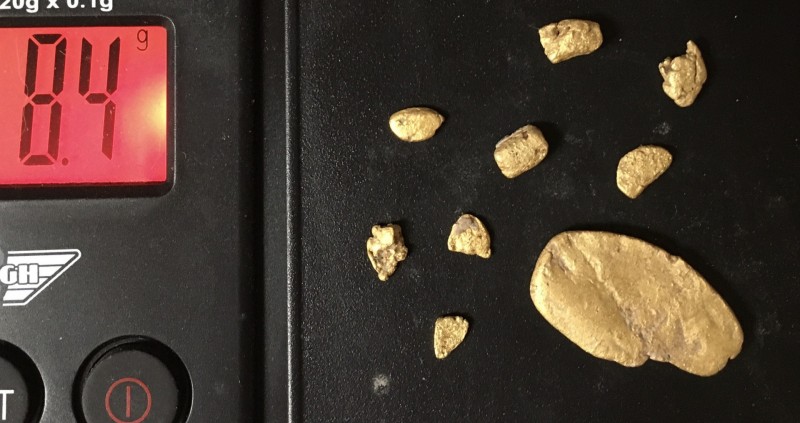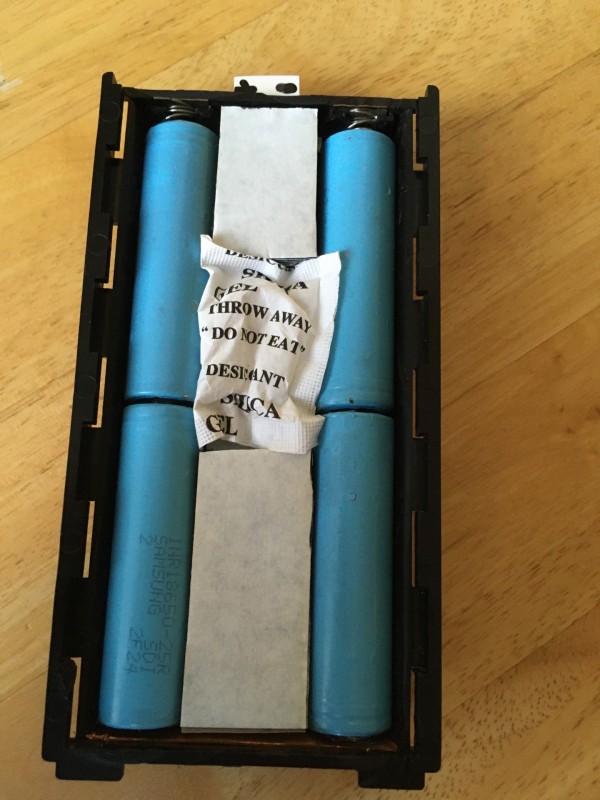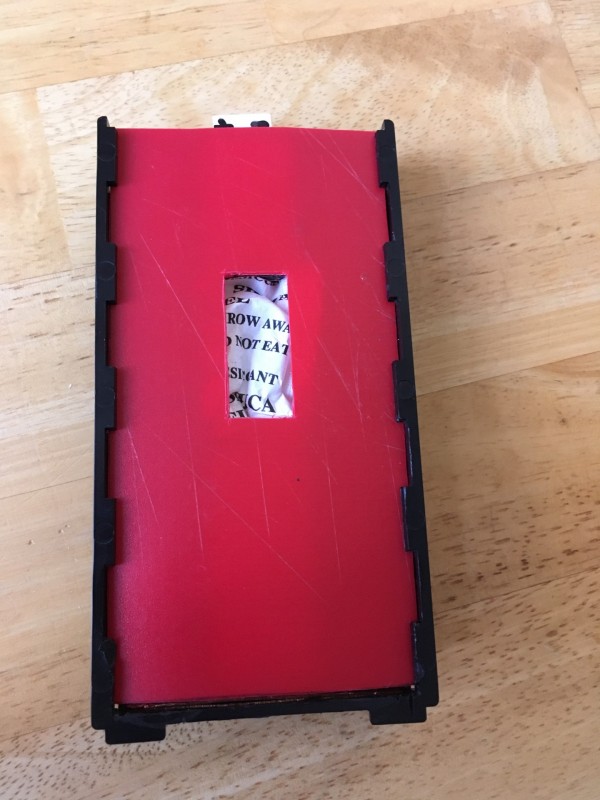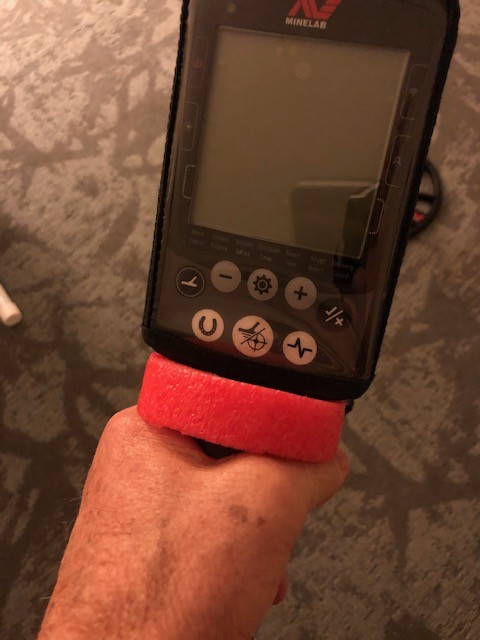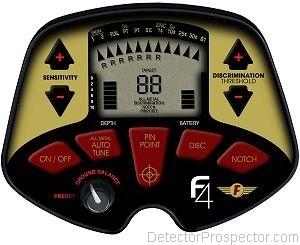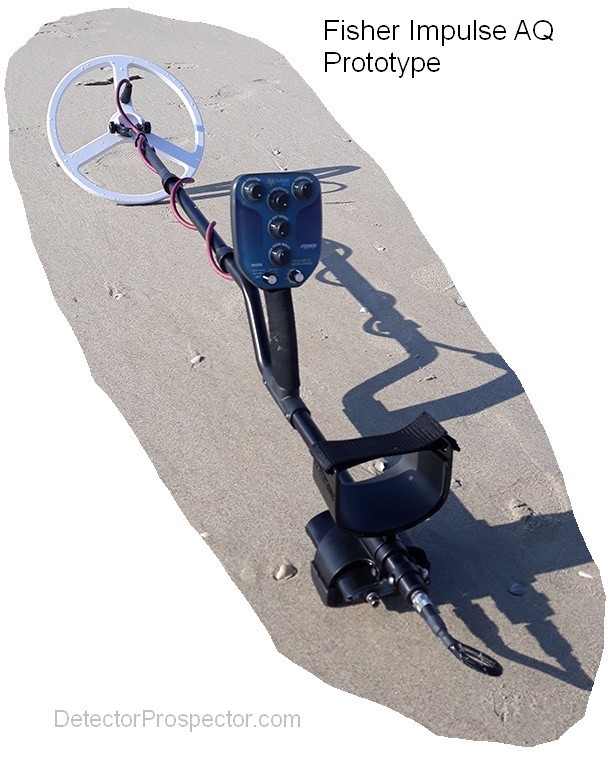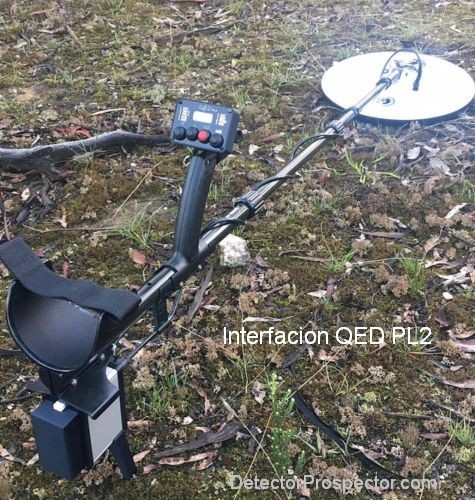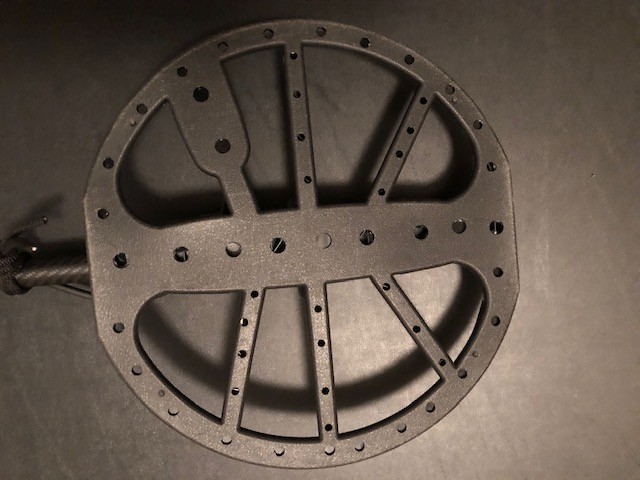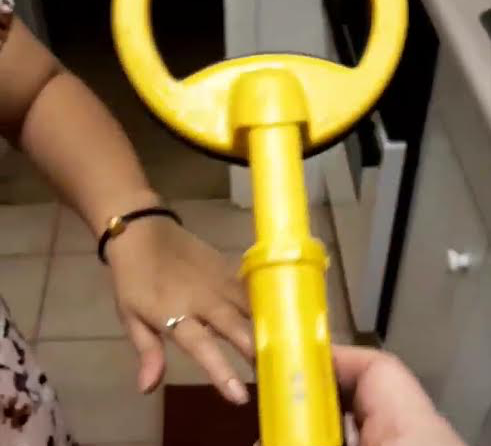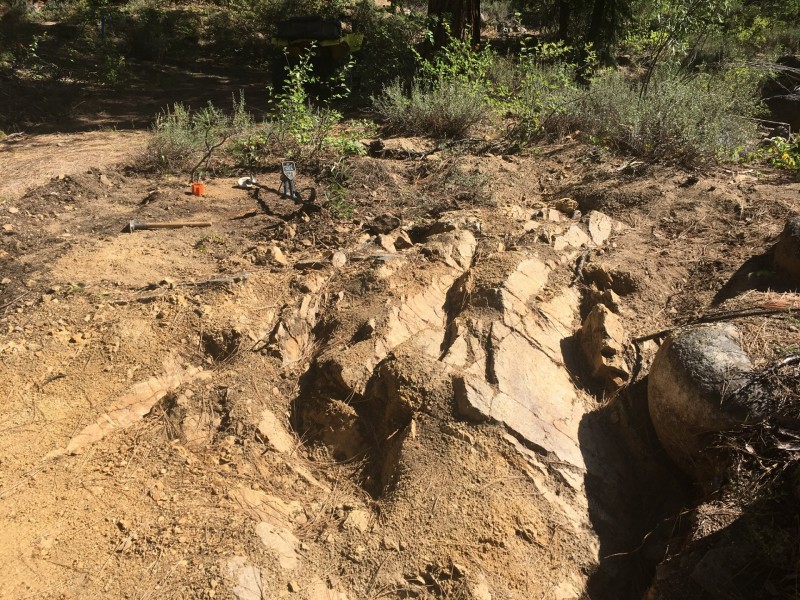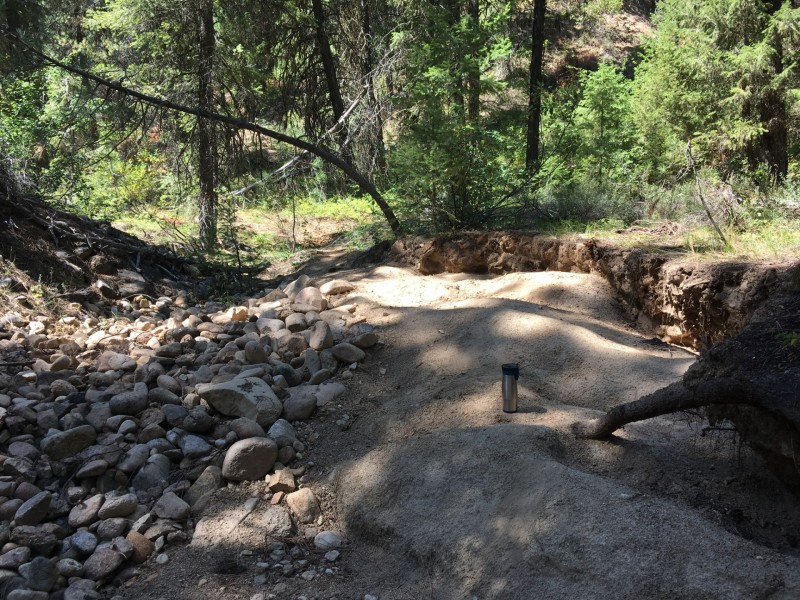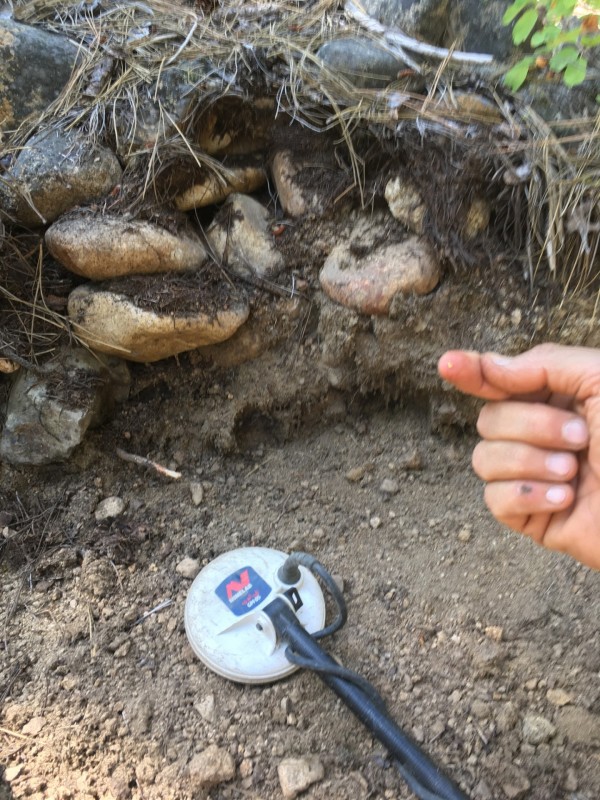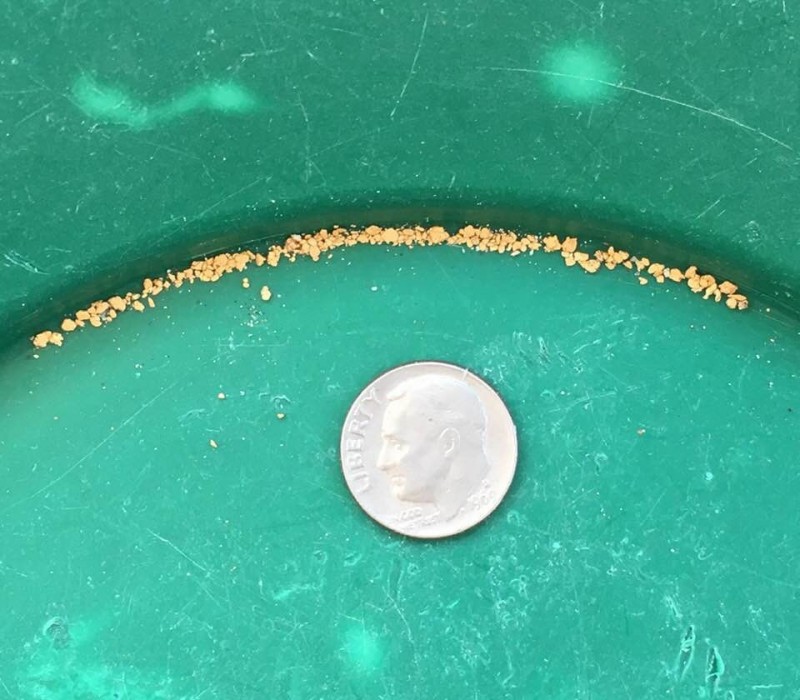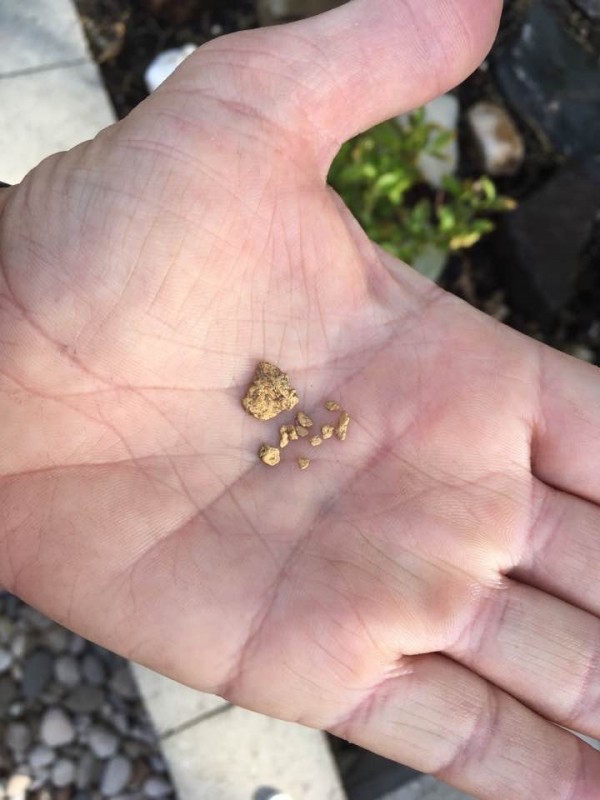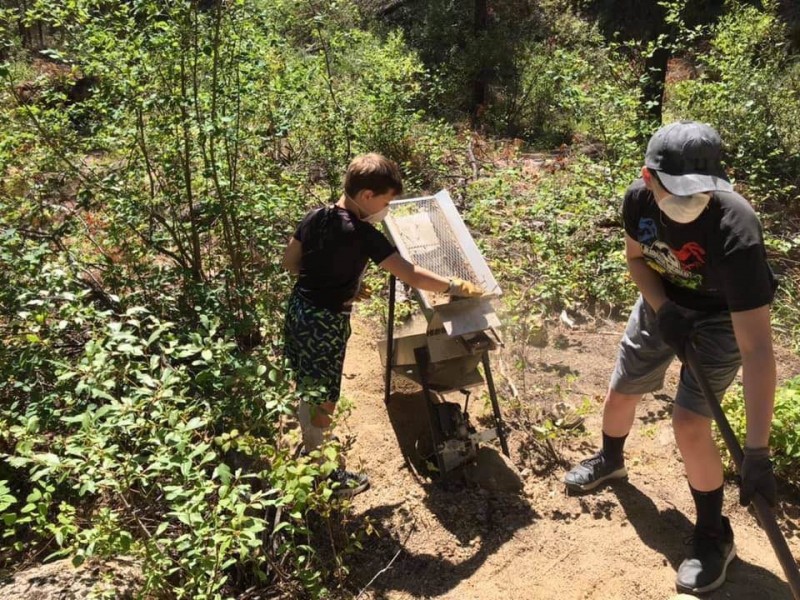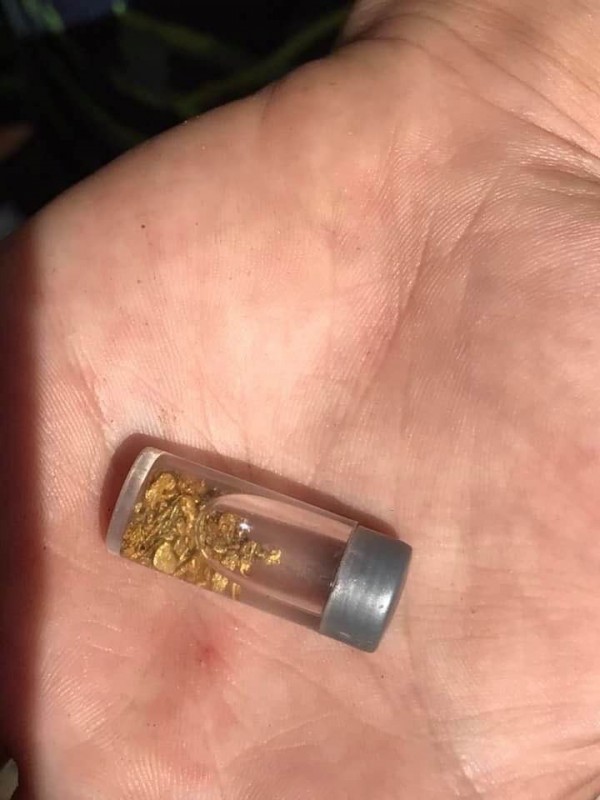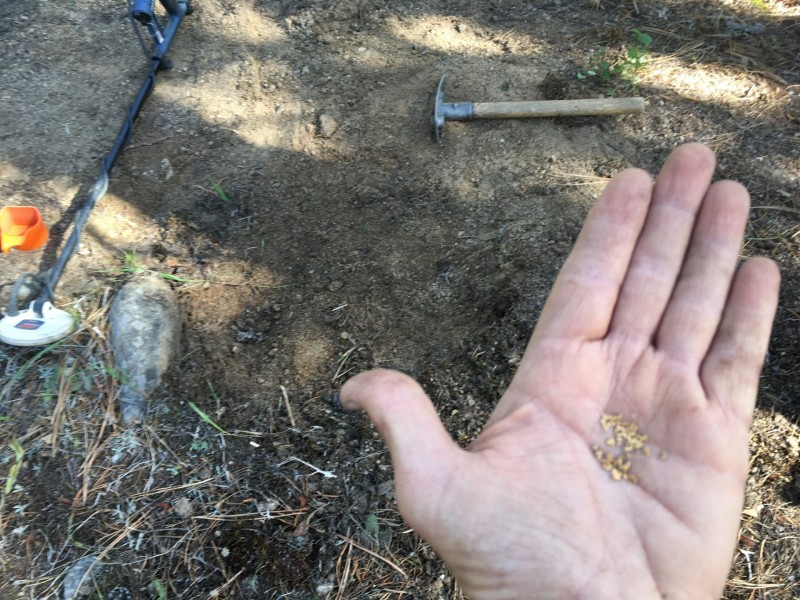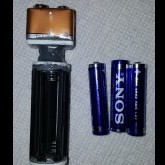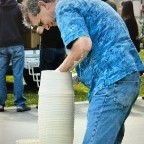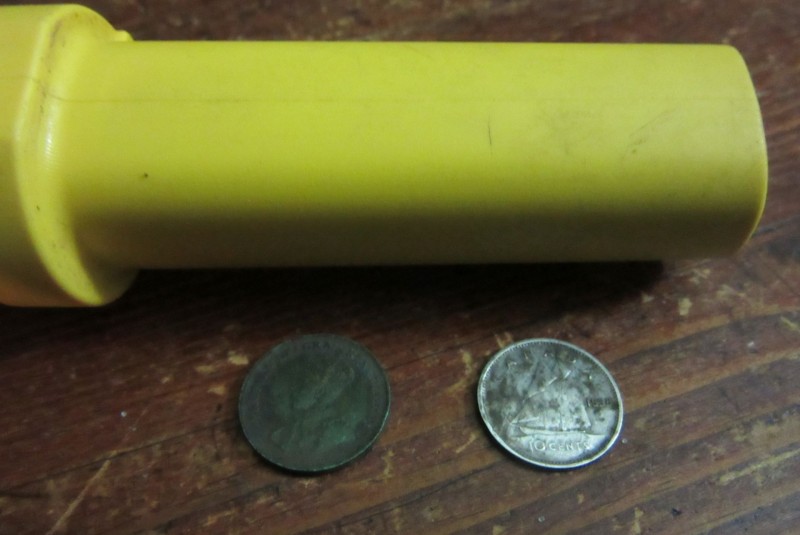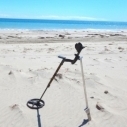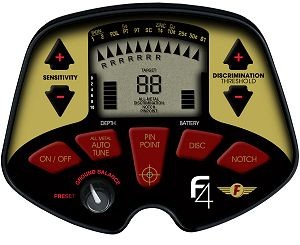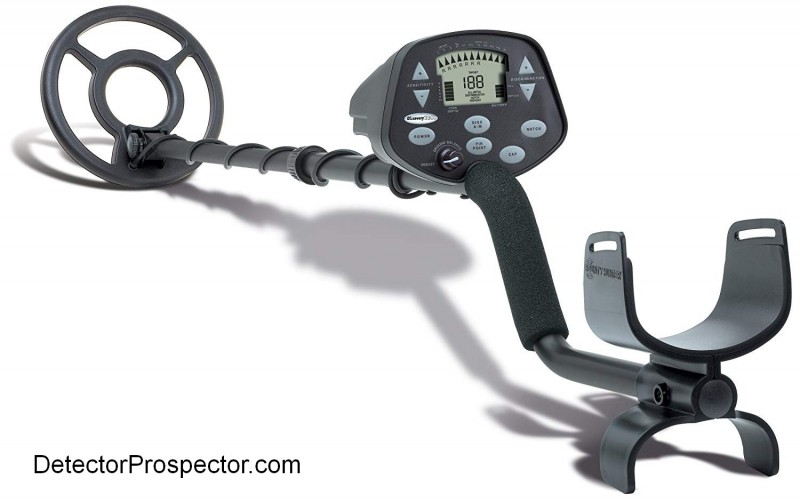Leaderboard
Popular Content
Showing content with the highest reputation on 11/10/2019 in Posts
-
Hi all, It’s been awhile since my last post, but I’ll be sharing some knowledge and anecdotes more often, now that my summer job is a thing of the past and I’m free to once again roam the desert southwest, wielding the power of the mighty Zed to unearth nature’s golden treasures. I was carefully gridding (or - in deference to Gerry in Idaho - crawling) an old nugget patch during a recent trip to the far flung reaches of Nevada’s golden triangle, when the hypnotic drone of the threshold was suddenly broken by a sharp, double “wee-ooh, wee-ooh”. This type of response typically heralds a small and shallow target, usually within six inches of the surface. “Most likely a boot tack or bird shot”, I thought to myself as I crouched down and scraped an inch or two of the dry and dusty desert soil away from the target zone with my pick. Another swing of the detector coil indicated that I had moved the target, and a quick sifting of the material with the hand scoop revealed a small yellow nugget...the first catch of the day! A few more of these shallow pickers were dug during the the next couple of hours, and then I heard a faint, single “wee-ooh”. Knowing that this meant a bit larger target at depth, I went to work hacking into the densely packed soil with my pick until...well, I’ll let this short video tell the rest of the story: https://www.dropbox.com/s/zzmm1pgdrpaswe7/Nugget dig.mov?dl=0 The actual weight of the nugget turned out to be 5.6 grams, bringing the total for the day to over a quarter of an ounce of the good stuff!4 points
-
4 points
-
This is the best video I have seen yet explaining the basics of search coils and why some may be better at some uses than others. By Garrett May 2019.4 points
-
I have been hunting an old desert SP stop that is heavy alkali , so heavy that the top of the ground is a white salt crust. The park 1 and beach 1 settings have produced the most favorable results for me and at this point seem equal. The sensitivity level I run varies as chatter annoys me. The settings I have been using are 50 tone, Iron ON with volume set at 1, 0 iron bias and recovery at 6. There is a lot of garbage in the ground. I recall Brian Cal-Cobra posting about hunting in similar conditions and am interested in his take (as well as others) on setting choices. The Morgans and the lock came out of the worst of the alkali mud and were completely encrusted. All three were good dig signals but none deeper than 6 inches.3 points
-
3 points
-
Welcome back to the AU zone Lunk, great looking gold for the Patch. You’ve been missed. Your skills and ability to find the gold “that I’d just missed” (way back when the Zed was new in 2014), convinced me to divest myself of lesser gear and jump on the GPZ wagon. Between you and Gerry, I’ve never regretted that move. You two, along with all the advise of Steve & JP, have become the game-changers in my outings. So thanks to all, my poke keeps getting heavier.3 points
-
It's a shame Lunk and I never hunted together while I had my GPZ. He and I hunt the same way, super slow and methodical gridders. We both find gold. But we are complete opposites when it comes to tuning. I tune for hot and noisy and let my ear sort the signals. Lunk goes the other way, tuning the machine as best as is possible to eliminate all the false signals that I am sorting with my ear/brain. Both methods have reasons why they may be better and in general I recommend people tune like Lunk does rather than the way I do. I'm more the oddball person out on that sort of thing at the other extreme. JP falls more in the middle leaning perhaps a little my way - he hates smoothing. In any case it would have been fun to hunt together and cross check targets found so opportunity lost there. It may have helped shed a little light on which methodology is best. If there is a tuning wizard out of the three of us though I vote for JP. Lunk and I are more the outliers. No offense meant there Keith!3 points
-
If you have a 3D printer , save some money and modify this model to your liking: https://www.thingiverse.com/thing:28737372 points
-
I love clever ideas like this Sure Grip that makes detecting life easier. This is what I did before I saw the Sure Grip. I cut a swimming noodle to a convenient thickness, cut a slit in it so I could simply slip it around the top of the handle. It buffers the control box from weighing on my hand and stays on with no problem. It's nice and comfy but easily removed when cleaning my EQX. The Sure Grip however would be better when submerged in water.2 points
-
Flakmagnet I have had this problem a few times. Find some mild ground then try to ferrite balance for 2 to 3 minutes. If that doesn’t work then RESET ALL settings. Then try a long ferrite balance again. Then restore individual favorite settings and turn on the GPS and WM-12 if you use them. Have a good day, Chet2 points
-
I paid good money to get those setting (and a lot more) and now he's giving it away! I wouldn't have missed it. I've had better days in Rye Patch since the training than before the training. I think I've already paid for it with my finds over the last couple of trips. Mitchel2 points
-
No offense taken, amigo, and I totally agree with your assessment: JP is the wizard!2 points
-
Simply put, in combination with my other audio settings, the target response is the most distinct with High Audio Smoothing. If you switch back and forth between High and Off, you'll hear what I mean.2 points
-
Yeah, I just added a note to my first post. This is the same detector as the much more expensive Fisher F4. The F4 comes with an 11” DD coil instead of the 8” concentric on the 3300, plus the F4 has a three piece instead of two piece rod. However, the target id scale on the F4 is compressed from 0 - 99 compared to the amazing 0 - 199 scale on the 3300... see my post above. I doubt Walmart and Cabelas are very happy to be sitting on 3300 stock at higher prices.2 points
-
Yeah and no real mention of PI. However, what there was they covered briefly and well, with good illustrations. Concentrics in particular are overlooked so nice to see a clear explanation iof them. In mild soil with targets not too close together they are a secret weapon. Metal Detector Search Coil Compatibility VLF Concentric vs DD Coils2 points
-
Very nice find my friend, but what astonished me most was your smooth tongue and colorful story telling capabilities. As for a 16" deep nugget, I just measured the 14" ZED coil and with stock coil cover it is actually closer to 15", since the cover sticks out almost a 1/2" on both ends. Your 16" deep nugget find is more like a 17". Now you are getting close to the 18" depth I dug one last week. Either way, your attention to detail, ability to find other top performing settings on the 7000 and the shout out just goes to show folks why I enjoy having you on my Field Training Staff. Hopefully I can get back down there 1 more time before the weather sets in. Nice 1/4 oz day btw.2 points
-
That all sounds excellent, especially the small gold results. I am in total agreement that any discrimination system has trade offs, even in the best VLF detectors. Those trades are perfectly acceptable as long as we know what they are so we can apply proper judgement on where to employ discrimination and where to dig everything. The big downfall for PI has always been its affinity for ferrous targets making it simply impractical for use in some locations. Impulse AQ addresses that issue and I expect the best places to use one initially will be exactly those locations that PI users have avoided until now. I personally have no doubt this detector will be very productive in the right locations and look forward to using one myself. I have not owned a waterproof PI since I sold my ATX and have been waiting patiently for something better to come along. For me the waterproof TDI was too little too late. I wanted one from the very first day I used a TDI but after years of being ignored in my lobby efforts I found by the time White’s finally made one better things like the Impulse were on the horizon. Very kind of you to post that information LE.JAG..... thank you! It’s especially good to hear the Terra version is in beta testing, that bodes well for a dual machine introduction.2 points
-
From Wikipedia: "A long-range locator is a class of fraudulent devices purported to be a type of metal detector, supposedly able to detect a variety of substances, including gold, drugs and explosives; most are said to operate on a principle of resonance with the material being detected." There is more at the link, but "a class of fraudulent devices" says it all as far as I am concerned. I just wanted to post this so people can find it in the search results in case they are looking. For me these devices have always failed the most basic test... the experience of hundreds of thousands of prospectors and treasure hunters around the world. Treasure hunters and gold prospectors will give anything a try that might work, no matter how crazy it seems. If it works, the use soon spreads to other prospectors. You can Google genuine successful results for regular metal detectors all day long. The internet is full of successful people using normal metal detectors to make great finds. Except for a few obvious promotionals, the success stories of people using LRL devices are glaringly absent. All excuses for why this is so flies in the face of the simple common sense answer - they don't work. In almost 50 years of metal detecting and prospecting I have met a lot of successful people, and none of them got that way by relying on a long range locator. Part two of the common sense test is if they did work, there would be at least a few users of these devices that would be fabulously rich. The few I have met are anything but... just the opposite. Again, excuses made about why these rich LRL users are invisible fly in the face of common sense. Like wanting their privacy, as if we are not a country that brags about every tiny thing we can think of! The only people getting rich are the people selling these devices. I personally refuse to purchase anything from a company selling long range locators. It says something about the management of the company that makes me prefer to do business elsewhere. If you want the absolute best information on these device anywhere visit the website below. More at Geotech1 point
-
I consider myself to be extremely fortunate due to the fact that the entire age of modern metal detecting has taken place over the course of my lifetime. I was too young in the 60's to be one of the many famous names that were there first on the ground with these new toys that go beep. That's good though for me as most of them are gone now and I'm still here. I got my first detector at the true dawn of the modern detecting age when I got my White's Coinmaster 4 in 1972. It was one of the first of the new "TR" machines that were the starting point for what most of us use today. Mine was as basic as a detector gets, no ground balance existed yet or discrimination. Just a couple inches depth and a beep, dig it up. So I have been involved in detecting now for 47 years. I started my business while in high school in 1976, and have been involved in metal detecting pretty much daily ever since. Anyone who followed my online presence starting in 1998 may see a pattern. I have been involved in some top end machines, some VLF, but basically almost every ground balancing PI made has been in my hands at some point. I had a vision in my mind based on my background in computers that told me what was possible and where we were headed. I was particularly incensed when an upstart company from Australia showed up the industry leaders at the time with the world's most powerful gold detecting PI machines. All the more so when I heard White's had a shot at it and passed. I made it my mission to jump on and foster anything that came along that might compete, and so I was involved with the Garrett Infinium, the first U.S. ground balancing PI. I had a lot to do with White's finally producing the TDI. Yet the fact is nobody ever seriously took Minelab on, and finally they won me over because they delivered when the rest just milked us. Minelab has been the sole company at the forefront of this technology since the SD2000 was introduced. All this time I have wanted two things. A vision in my mind of what a VLF could be. And a similar vision regarding a PI. Both those visions basically revolved around something a normal person could use both as regards ergonomics and price, two areas we kept getting bent over on for 20 years. Long story short I am grateful to Minelab for allowing me to be involved in the machine that delivered on my first vision. The Minelab Equinox is the first machine ever that really can do any VLF metal detecting task and do it well. In any one area it may not be "the best" but no one machine delivers across the board like the Equinox. My VLF quest is over. I will use an Equinox as my primary unit until a detector comes along, probably a Minelab, that does what it does but better. No more VLF buy and try for me. Yay! In 2017 I laid out my vision for the PI I wanted. The price was kind of a set the bar high (with a low price) thing so there is a little wiggle room there. But not a lot... the machine price should be something most people can stomach. As far as I am concerned the GPX 4500 sets the standard at $2699 both for performance and price. The TDI wins on ergonomics but loses too much in performance for me. All I really wanted was a GPX performance in an ergonomic package, and we all know it can be done. That is what is so frustrating. It's one thing to introduce new tech but all I want is proven tech packaged right. Garrett has really been a disappointment not putting the ATX in a light box. They can do it but so far have refused. I would have been satisfied with that. Right now I am calling the Australian made QED as being the default winner of my challenge. The rough edges have been smoothed out, and it's got the ergonomics, coil selection, and price all right. I am not going to argue with anyone over performance. Based on what I know it's good enough for me to go find gold and easily beats the TDI and is competitive with GPX. Good enough for me and good job boys. The only niggle is no FCC approval for U.S. sales, no U.S. dealers or service. But by end of 2020 if there is nothing better I will have one anyway. But we have the Fisher Impulse AQ on the verge and a dry land prospecting version promised. I would be crazy not to wait and see what develops there. I sold my GPZ for many reasons, mostly because I was not going to be detecting much this year, but I resolved when I sold it I would wait until my vision appeared. I knew it was close. I decided I can have fun enough with Equinox until that happens. Put as simply as possible I want a reasonably powerful PI packaged like a good VLF that most of us can afford. Something that can get in and out of a small backpack with an hour of labor being involved. So I am tossing down the gauntlet. I have my magic VLF and am looking for a mate for it. Right now QED and Impulse are in the running. And it's up to Minelab, Nokta/Makro, and sure, let's toss Garrett and White's in there also. It's time to deliver as by the end of 2020 I am getting one. I prefer in the spring but if something is one the radar I may wait. By 2021 I will be using something that finally fulfills what this high school kid from Alaska has known would happen someday. And I got to be there and see it all from start to finish. As I said... a very fortunate soul! Interfacion QED PL2 Fisher Impulse AQ1 point
-
I've read a number of threads on the best way to cover and protect the coil and there's been a lot of good ideas for sure! I thought I'd add mine for those who primarily hunt sandy beaches like I do. Over the years, I've tried several ways to keep sand out since a build up between the coil and cover could and will result in a degree of false signals/chatter. What I finally determined was that sand is the "cleverest" of all elements with which I've had to contend. It can and does get into everything. No matter how well I thought I'd sealed the cover onto the coil, sand still managed to get in there...granted not much but my thinking is that if it's not supposed to be there, I want it outta there. And the one time I tried sealing the cover, it was he** to get the cover off! Conclusion; Sand will always get in but with most methods of sealing the cover, there's no way for it to get out! I decided to find a way to give those clever grains of sand a way out. I came up with this solution about 5 or 6 years ago and it's worked well for me on my Florida beaches. I simply drilled holes in the cover which allows the water to rinse out the sand while still protecting my coil from bumps and scrapes. After searching the dry and wet sand, a few swipes in the surf and the sand is rinsed away. When I get home and remove the cover, there is only a very few isolated grains between the coil and cover...not nearly enough to cause me any trouble whatsoever. Works for me but your mileage may vary and I'm always open to better ideas. Note: I drill the holes from the inside out so there are no ridges on the inside which would inhibit efficient draining. Just one method from my sandy foxhole.....1 point
-
After much deliberation I finally pulled the trigger on the Nokta/Makro pulse dive. My old pp crapped out and this seemed like a logical choice for me because A: it's a waterproof pinpointer and B: it doubles as an underwater hand-held detector. I've constantly been gathering feedback online about this machine as it had sparked my curiosity from the first glance. It arrived Wed in a nice heavy duty carrying case. The case isn't something I would lug around, but it is perfect for garage/closet storage. (or just a cool decoration on my cabinet) Taking into consideration the carrying case, the versatility, the pp coil-cover and the waterproofness it seemed like a good bargain, and I must say, 160 bucks and a few days later I still feel that way. It definitely doesn't feel like a toy.. (but it's as fun as one) You can tell some thought went in to this thing when you pick it up and start pushing buttons and connecting and disconnecting things. No it doesn't have the depth that a nox or a fisher has, but having had one, I believe it exceeds the depth of a garrett carrot. What do you expect? It's a smaller handheld device. I have to admit that what i saw from the air tests, and lack of air tests online left me feeling underwhelmed and hesitant, however since powering it up the first time I have been pleasantly surprised by its responsiveness. I have tested it on several gold and silver pieces of jewelry we have here and it was able to pick them all up. No this isn't a fine tooth comb, and perhaps there are things it will miss, but it also doesn't discriminate - i mean you can come up with a hundred things it's not, and it wont do. Let me tell you what it has done for me so far. It has solved my lack of a pinpointer problem. It has made my underwater searching way easier and allowed me to cover more ground and recover targets faster. I no longer have to lug around my nox in the rolling waves if I don't want to. I can easily swing my arm around under water while i kneel, crawl, float, lay on my belly, or swim around. Maybe I hit the jackpot when I took it to the beach today and 5 minutes into my first hunt, found my first target, a beautiful diamond or diamond-ish ring. (GF already stole it from me - see pics below.) It was about 3 - 4 inches below the sand under about 3 feet of water. Most fun i've had detecting in a long time. Not an excal. Not a sandshark. Just a fun way to search for stuff while you swim. Now I have only taken it out once and plan to add some more updates as i continue use in the future but wanted to share this with the community for those who might be interested and those who may be on the fence. In my opinion if you are considering spending $100+ on a PP why not get something with a bit more utility? Especially if you mess around in the wet water stuff like i do. Seems durable. Nice weight to it. The vibrate function and sound works very well. The coil attachments are very easy to take on and off. It also came with a lanyard that i conveniently hooped around my wrist. Just dont forget to put the waterproof cap back on the bottom after charging - before you leave the house and walk to the beach, otherwise you will have to walk all the way back to the house to get it and then walk all the way back to the beach again. Anyways, i had a blast and I cant wait to take it for another spin. Don't really understand all the negative feedback i've seen online, though it's still early. If you are considering getting one and your expectations are realistic, i think you will be pleasantly surprised. The lil lady says she wants to get one as well. I can't really speak about how it compares to the Quest handheld or other similar style detectors because I haven't used them. Also i am not affiliated with this company nor any other company. Cheers and HH all1 point
-
Time flew by up at the cabin and on my little claim this season. I continued to clear, detect, and drywash the decomposed granite bench areas. Here’s a nice clean out from one drywash session: I also reworked the sides of some oldtimer Diggings, filling in their ditch as I go....lots of work here for little return lol! Found some nice nuggies when I uncovered some crevices in a different bedrock...biggest piece was almost .6gram, decent size for up here: A highlight of the summer was having my nephew’s boys visit. They learned drywashing, running the concentrates through the recirculating sluice, then how to pan. Each ended up with a couple grams(hmmm....maybe a little “salt” in those concentrates lol): AND the season ended on a positive note! Found a nice handful in this small scraping from a new spot....definitely will setup the drywasher here next year! Ended up with just shy of 12 grams total up here for the season....not much gold, but tons of fun and memories! 🙂1 point
-
1 point
-
1 point
-
What Fred said. Think if they were dry washing piles were might be more piles of smaller tailings…but only guessing.1 point
-
Hard to guess, perhaps someone raked some to detect... usually the tail piles will be faint but still visible..... if it was detected there should be shallow dig holes from the old Vlf days...those marks hardly ever disappear completely. Did you detect any? fred1 point
-
During the beginning of detecting with the 5000 I found it extremely useful to re-read the manual every 2-3 months. There is a lot to unpack there. Heck its probably still useful now1 point
-
I know Ashtabula well, fish out of there each year a couple trips with friends who keep their boat at the harbor. I hope Idaho is treating you well, beautiful country. we got our first snow the other day, too early!! Anyway, hopefully I will get a chance to get out soon. Good Hunting, keep in touch if you get back in the Lake Erie area.1 point
-
1 point
-
Hey Guys, Great thread on timing. This has always been the most confusing issue with the GPX series. I wish Minelab would of allowed the Special timings and Special menu on the LCD screen to be blanked out when you're not in Special on the toggle switch on the front panel. Many customers of mine over the years get confused on this, being in Normal on the Toggle Switch, but thinking cause the LCD menu screen says they are in Fine Gold, Sensitive Extra ..... and such. When you're in Normal on the Toggle, you will only be in Normal timing. When you are in Enhance timing on the Toggle, you will only be in Enhance. However, when you place the Toggle switch to Special, then you can use the 4 timings on the GPX 4500 or the 6 timings on the GPX 5000 in the menu screen. I think this is the most confusing thing Minelab did on the GPX series in my opinion.1 point
-
That’s why First Texas isn’t worrying about hyping/promoting new machines like the Manta. They make the bulk of their sales in the big box stores. They always have a market for their older housings. I believe these share housings with the old F-2/4/5 detectors. Pretty solid marketing/manufacturing plan being able to move older models/housings from the top tier brands down to the entry level big box store brands.1 point
-
Well, I'm sure I need to do like Chet has done with the Xcoil charts. I need to take a few nuggets and bury them and see how deep I can hear them. In the many training sessions I've had with folks we have never done this. It seems obvious I should have spent more time on this on my own so that I know what different settings are capable of 'hearing' a faint signal. It hasn't come 'naturally.'1 point
-
It is the tuning of the ear that makes the difference. You guys KNOW what you hear and some of us don't hear it or we don't even know what it is! That is the art to go with the science. IMHO Mitchel1 point
-
Way to go Lunk. We left too soon. But at least the Zed will be back in commission for winter hunting in AZ@1 point
-
1. Cost 2. Color 3. Ergonomics 4. Uses AA batteries 5. Less complex 6. Size/collapsability 7. Coils 8. Desire for Multi-IQ without having to buy the Equinox I personally would love the form factor of the Vanquish with the ability/performance of the Equinox.1 point
-
If this detector works at 19khz it will be more sensitive to different sizes of gold, but again to large silver coins, or to 25 Us cent / Quarter / will have less reach than bronze coins or copper coins of the same size ..1 point
-
By the way Erik, definition of terms in gold mining, because they aren't obvious. Fine gold=small gold peices, large gold peices would be "coarse gold". Free gold=gold in its elemental form, not combined with other minerals in a sulfide. You can get free gold out just by crushing the rock and panning. Sulfides require a chemical process to separate the gold.1 point
-
As admin I would say the rules here basically say keep it respectful, and no politics. So beware the line between saying dowsing as a methodology is "dishonest" and saying that those who believe in dowsing are dishonest. If a person believes dowsing works they are not being dishonest in that belief. The perception of such things causes discussion to stray into people defending their ethics and intelligence instead of staying dispassionate about a subject. Tread carefully on these forums when it come to respecting other peoples "beliefs". What constitutes allowable public policy or not is merely an opinion when it comes to politics. Some people (not me) approve of theocracy. They are not "wrong" and you are not "right" in your opinion that public policy should be based on science, proof, etc. It is all opinion based on personal preference as to how to structure government. I do not allow politics on this forum as it is the realm of endless argument over such opinions, and so that's the end of that part of the discussion. If you want to do battle in that realm there are better venues. LRL threads have a way of going south and so this one may get locked at any instant that it appears to be heading that way. To reiterate, my concern in starting the thread was to warn people about LRL devices, not prove whether or not dowsing works. Nobody here will ever be able to prove it does not to people that think otherwise and attempting to do so will just needlessly ruffle feathers. If anyone wants to state an opinion one way or the other about whether they think it works or not, that's fine. Trying to prove other people wrong... let's not go there.1 point
-
1 point
-
Hello, and welcome aboard! Steve and Simon, along with many others here, will have you finding stuff in no time! They all have pretty much seen it and done it all! 💰Good luck!💰1 point
-
1 point
-
I’ve looked at them closer and ground windows into them just for a better look at the structure and no doubt in my mind I’ve found a couple of very fine extremely common earth rocks. I’m learning ... slowly. Thanks for the help and tips and until my next great find may it be more of a challenge, really they should be getting closer with each try right, lol???1 point
-
A Quick Look at The Nokta / Makro Pulse Dive I was fortunate enough to field test a prototype of this amazing device and was immediately impressed by the Pulse Dive’s rugged, professional feel. The solid “heft” of the device made all other pinpointers I’ve tried feel like flimsy toys. It’s also a great, practical concept—a waterproof diving detector with a deep 5.5” (14 cm.) coil for that converts in a second to a regular pinpointer. The Pulse Dive features 5 levels of Sensitivity adjustment, selectable vibration, light and tone alert and can be paired with your headphones via a built-in wireless module. The production model features yellow detail for easy visibility underwater and comes in a sturdy case. The Pulse Dive kit includes covers for both coils, holster, lanyard, spare gaskets, charge cord and manual. There's also a second, louder endcap for land use. This is an extremely well-thought-out device—great not only as a deep, full featured standard pinpointer but also for quick area searches of dwellings, stone walls, enclosed spaces--and even as a security wand. My tests showed the Pulse Dive to have great sensitivity to small gold—even chains. It also had nice depth for coin hunting on land. Picture shows a ’32 cent and '38 nickel—my first two finds pinpointed with the Pulse Dive. A great addition to any serious inland or shoreline treasure hunter’s kit. cjc1 point
-
I had to pick 3, as when Gold Detecting my split is something along the lines of GPZ - 50% GPX - 25% SDC - 15% Gold Kruzer - 10%1 point
-
It amazes me that they don't consider this worth keeping, technicality or not. I guess that's good for you in some ways, but it's their loss, IMO. Anyway, the UK system beats the heck out of ours.1 point
-
After having bought and used a Minelab Equinox 800 for more than 80 hours/ 1 year, I bought a Garrett AT Max as well. The AT Max is my favourite detector now. Don't get me wrong, the Equinox is a very very good detector in my opinion and I'm keeping it for sure. However I can not really get used to the "tight" vdi scale of -9 to 40. I prefer a vdi scale of 0 to 99. And the handle/straight-stem combination causes my arm (elbow/shoulder) to hurt some after even half an hour. No problems with the S-stems of my other two detectors. But most importantly (for me personally) the AT Max has something extra, that I have never experienced with another brand of detector, namely: FUN. It's hard to describe why or how, but just looking at it and using the AT Max gives me joy. And every time the Max connects immediately with the MS-3 headphones (or my Z-Lynk receiver for use with my XP backphones) and the wireless AT Z-Lynk pinpointer. BTW, this "FUN-factor" is not advertised by Garrett, but you get it nevertheless and for free. 😉 I think (and it's just my personal opinion, others may have a completely different opinion of course) the Equinox is more technically advanced and adjustable to personal preferences. More frequencies and also simultaneous frequencies will give me more confidence of being able to adjust everything to the "max" (with the Eqx instead of the Max 😀) while prospecting or searching around salt water. The Equinox has everything I want in a detector, but , since I bought the AT Max, I find myself taking out the AT Max to the fields and parks every time. On topic: Garrett AT Series That Good? : ( for me) YES! I suppose, now I'm a Garrett-fanboy, as well as an Equinox-fanboy. 😁1 point
-
1 point
-
Get out and practice Terryden. There’s a lot of fun and maybe treasure to come your way Thank you again Steve. This is a prime example of your sincere and unbiased opinion to all who ask for help. My detectors are pretty old technology and of modest capabilities also, but thanks to you and the members of this forum I get the best out of them. Mike1 point
-
Welcome to the forum! Well, it is an entry level detector so I would not expect too much. In theory any detector can find gold nuggets, but the reality is you are competing with a lot of people swinging far more powerful detectors. The area you are in does not have a lot of large nugget gold, and so you would typically want something hotter on tiny objects than this 6.6 kHz machine is going to be. The good news is I just saw these at Costco myself so I know you got a smoking deal. What you have really got is a good general purpose coin and jewelry detector. It does have a manual ground balance option, which is kind of a marker for a unit that is a “step up” from a basic factory preset detector. Should be decent for typical park detecting or walking a beach. Bottom line is Bounty Hunter has some good value deals when the price is right. Bounty Hunter Discovery 3300 Owner's Manual Newer Thread On The Subject Here1 point
-
Back on the old AMDS Adventure Forum Jim Hemminway and I discussed the DD vs concentric option for the F75. Jim eventually got the concentric and made a great report, which I am reproducing here. Jim Hemmingway 08-18-2011 Hi Steve… Yep, I recently I bought a 10” elliptical concentric coil for my basic F75. I was curious to see how the 10” concentric would perform over my ground [ Fe3O4 = 0.3% Ground Phase = 85ish ] compared to the stock 11” DD coil, with a view to prospecting applications where possible. I also wanted to compare its vulnerability to EMI. As you know, concentric coils of similar size to DD coils are noticeably less vulnerable to EMI, but are more susceptible to ground minerals. More important, concentrics improve sensitivity to smaller targets if ground minerals permit. That said, many prospecting areas have a ground mineral magnetic strength such that DD coils of similar size improve ground mineral penetration over concentric coils. BTW Steve, mentioning these generalities is directed at readers following along, and certainly not at you. The 11” stock DD measures roughly 7 ½” by 11 ½” compared to the concentric elliptical at 5 ½” by 9 ¾”…quite a difference looking at them side-by-side. Aside from anything else, the smaller coil will slightly improve maneuverability in tight places between rocks… yet still provide comparatively good coverage. I don’t leave for prospecting for two weeks yet, so the information presented below is based on checking out targets in the patio test garden where EMI is quite high at this time of year. Not real world conditions, as these are disturbed ground targets where we can expect somewhat less by way of depth and more erratic target ID responses… with most non-ferrous targets beyond a few inches depth either residing in the iron range or all over the map. Despite those factors, we can still conduct meaningful, relative side-by-side depth / sens comparisons. Below follow some observations… (a) F75 Test Results In the highly sensitive discriminate JE mode set to small iron elimination (12 or 13)…I saw no discernible difference in depth results over copper pennies down to 10 inches. I felt there was a very slight decrease in signal strength over the 10” Canada nickel but it wasn’t much. Solid lead “nuggets” at 2.2 grains, 4.5 grains, 0.5 grams all buried at three inches and a 1.0 gram solid nugget at four inches all responded with similarly good solid signals, with a slight improvement over the 11” DD on the smaller nuggets. All test nuggets were solid “can’t miss ‘em” signals. JE discrimination mode, for those unfamiliar with this unit, delivers an audio boost [for lack of a more suitable description ] to its signals compared to the more modulated all-metal mode, and this is quite evident on small nuggets and larger deep targets. It leads some users to believe it goes deeper than the all-metal motion mode, but that is not the case and particularly not so as magnetic ground mineral strength increases. In the all-metal motion mode the signal response was stronger and more distinct compared to the stock 11” DD over all targets including a 10” nickel. The signal strength improvement was most profound on the two smaller nuggets and to a lesser extent on the 10” nickel. There was no measurable target ID improvement over iron targets because these pretty much ID as iron with the 11” DD in this testbed, as mostly do non-ferrous targets beyond a few inches depth. Instability from EMI sources was only marginally reduced in JE discriminate mode but more significantly reduced in the all-metal motion mode. That surprised me. It certainly was not reduced by nearly the same magnitude as occurs with the smaller 6” elliptical concentric. But in all-metal motion mode it made the difference between running the unit at max sensitivity (99) with a bit of low level chatter as compared to reducing the sens level to 80 for an equivalent chatter level when using the stock DD coil. This may not sound like much, but it represents the difference between hearing faint signals or missing them altogether. I was pleased by these results. Some were anticipated, but I did not anticipate the depth results or the crispness of the all-metal motion mode signals on all targets in this ground. ( Comparison to Goldbug2 At the time I was running these tests, I was thinking that the Goldbug2 also uses elliptical concentric coils. They are very effective over this ground, surprisingly so on small shallow targets but comparatively less effective on deeper nuggets and nickels than is F75. But then…that is a result of high operating frequency over fairly mineralized ground. I ran some comparisons between these units and identical size coils…both the 6” and 10” elliptical concentrics. I should mention here that the F75’s 5” DD coil performs similar to the 6” concentric elliptical on depth /sens to both small nuggets and larger deeper targets such as nickels, although my in-ground tests indicate the 6” elliptical has a slight advantage on small stuff in this ground. Both units were initially adjusted to max sensitivity and GB2” was tested in both Normal and Low Mineralization modes. Of the two modes, Low Mineral mode …a slower autotune rate… gave the best signals overall, so that’s what I used for the comparison. The GB2 audio boost feature was not used in these tests. It dramatically enhances signals, but it was not used in these tests because it is not possible to hunt mineralized ground here at max sensitivity and with that feature turned on. It results in constant annoying false ground signals with slight changes in coil elevation over the ground. The F75 threshold was set to “0”…one détente step above minus (-1) one…barely audible… with audio pitch set to mimic the Goldbug2’s audio pitch more closely…at least for my hearing. The Goldbug2 does not see a 10” nickel with the 6” elliptical coil and barely detects it with the 10” elliptical. The F75 delivers a modest but solid signal with the 10” coil and a light signal over it with the 6” coil. F75 gives a much stronger signal than Goldbug2 over 6” and 8” nickels regardless which coil size is compared. The F75 delivers a stronger signal on each of the small nuggets described above regardless whether the 6” or 10” elliptical concentric coils are compared…and this is even more pronounced when comparing the 10” coils. Both units respond quite well to the nuggets, but the F75 has a very decided edge in signal strength. With these results in mind, I buried a 1.1 grain lead nugget at an estimated one-and-a-half-inches and a half-grain lead nugget at an estimated half-inch depth and no less. Comparing the small coils, the Goldbug2 delivers a much more discrete signal on the 1.1 grain nugget from any sweep direction than does F75, making it easier to hear. Both units signal modestly over the 0.5 grain nugget, but the F75 delivers a louder, easier-to-hear signal. Comparing the 10” coils, both units signal lightly on the 1.1 grain nugget, but Goldbug2 gives a more discrete signal. Both units signal better over the 0.5 grain nugget but again the F75 delivers a louder easier-to-hear signal than does Goldbug2. To put an accurate spin on these results, overall the Goldbug2 has the edge on these tiny nuggets… but it’s a very close thing. As a separate point, the Goldbug2 signals on these tiny nuggets even with the sensitivity reduced down to a setting of 5ish on a scale of 0 to 10. The F75’s sensitivity could not be reduced nearly so much…say about 90ish on a scale of 0 to 100…before it effectively loses these tiny nugget signals. F75’s sensitivity to these tiny nuggets is highly gain-dependent. The comparison between these units comprises many tests over several weeks. All testing was done wearing NuggetBuster headphones with the volume set to the same level by using the “clicks” on the volume control. Signal strengths and gain levels needed to hear them sometimes changed slightly on different days but in a relative sense remained the same. High residential EMI is the culprit, as no rainfall was experienced during that droughty period in July. Something readers should keep in mind is that the F75 is more vulnerable to high residential EMI increasing background chatter compared to Goldbug2 at max sensitivity settings used in these tests. This makes it more difficult to hear weak signals from these tiny nuggets. That will change when searching prospecting environs away from EMI sources. By comparison here, the Goldbug2 is much, much less vulnerable to EMI, a result being that even the weakest signals are easier to hear against it’s very quiet, smooth threshold hum. Don’t underestimate the effect of EMI. It can really reduce air test depths compared to in-the-ground depths and that does not just apply to PI units. No meaningful comparison was done in discrimination mode over any of the targets. The GB2 iron discrimination is fixed at a level slightly above small iron elimination in order to deal with hotrocks. This results in very poor, usually broken signals over most disturbed ground targets in this testbed. So, there was just no point. I can relate that using the 10” elliptical coil, the F75’s JE discriminate mode set as high as “14” will give a modest two-way signal over the 0.5 grain nugget at one-half inch… and will detect a 12” deep Jefferson nickel in this ground. Raise the discrimination setting to “15” and these targets are gone….similar to GB2 in discrimination mode. A Final Comment… It’s interesting stuff Steve, everything considered. We occasionally read reports from around the country about how different units perform over varying minerals / soil types. This is my experience over my testbed disturbed ground. The Goldbug2 performs quite well in this soil, especially the 6” elliptical coil on very tiny, shallow targets. I love that unit so much I made the effort to reinstall the box under the armcuff. Now it feels even lighter, and of course the location of the controls is permanently burned into my memory. The F75’s small nugget sensitivity is exceptional for a 13 kHz operating frequency, and this leads one to consider additional design factors that contribute to small nugget sensitivity besides operating frequency. Think what you will, but these results tell me that more extreme ground mineralization than exists here will be required to reduce the 10” concentric’s depth / sens performance on small nuggets below that of the 11” DD coil. Take care on your trip Steve and watch out for those damned snakes. I have to get packing for a two month trip, first to the Appalachians, then to northern Ontario. We'll speak with you again early next winter if not a bit sooner. Jim1 point




